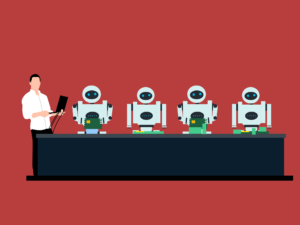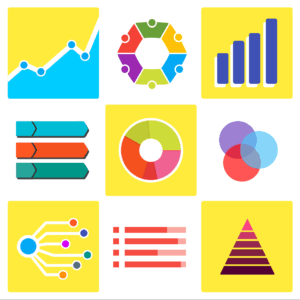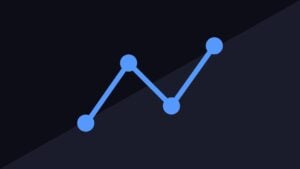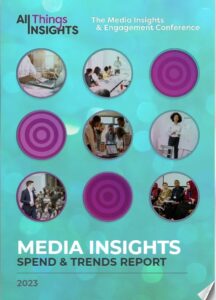The Power of Observation
So what are some of the best practices the insights professional can strive for when it comes to staying human-centered?
For Yogesh Chavda, Director, Center for Marketing Solutions, University of South Carolina, the term human insights is a bit problematic at first glance. “In market research, there has always been our ability to define the what and the why with, I’ll call it consumer data or consumer insights,” says Chavda. “What I would say for consumer insights is, the beauty of what’s been happening over the last one hundred years is that we’re able to understand consumers, consumer behavior, consumer mindset, using qualitative and quantitative data. Qualitative data obviously helps you quantify the situation. But the quality of data is where it’s really opening up our understanding of the human psyche and why people are doing what they’re doing and what’s going through their heads as they’re going through a process.”
Chavda continues, “That’s the qual/quant part. But the part that I also absolutely love is the power of observation. Seeing people in their native environments and seeing how they’re living and how they’re behaving in that and why—it just contextualizes for you how they’re making their choices.”
“As an example, when I was at Procter & Gamble in Latin America when I worked there, the general manager for hair care and hair color, she had a very specific rule. If you’re doing a market visit, day one is going to be in home visits and store checks,” he relates. “Literally, we would catch a red eye from Venezuela to say Argentina or Colombia or Brazil or Chile. We would land and we go straight to do store checks, and then in-home visits. That would be our day. But having that kind of experience allowed us to understand the similarities and differences of consumers across these different countries. You’re talking to them, you’re seeing them, you see what their aspirations are. Even in some of the most low-income homes we saw in, say, Buenos Aires, for example, or even in Sao Paulo. People still wanted to buy Pantene shampoo. It’s very expensive. We get it. But we aspire to it because we know it’s a quality product. And because it’s a quality product, we know that our hair is going to look great. Some women would actually save money to buy a bottle of Pantene shampoo and conditioner because they knew that the quality would be amazing.”
Chavda asserts, “You couldn’t catch that type of consumer insight in a focus group. You can’t catch that in quantitative data. But with in-home visits, that’s when you really see the power of the human-centered insight. All these places that I’ve traveled to and done this kind of work, it’s just been absolutely incredible in seeing people in that situation. It’s the power of observation.”
Removing All-Too-Human Bias
Still, despite an established focus on human insights, there are aspects of artificial intelligence that can’t be ignored, for example, its automation of some activities and its speed and efficiency. Yet, some in the community still may question some weaknesses of AI, such as questions on data quality and inherent bias.
For Gabriel Dorosz, founder and principal of Mighty Blackbird, a consultancy focused on building a better media and advertising ecosystem for publishers, brands and audiences, (and formerly Head of Insights for New York Times Advertising), the question of bias factors broadly into the human insights equation.
Dorosz says, “This is going to sound like a contradiction, but when designing and executing research make every attempt to free yourself from bias while also drawing on your experience and expertise. Make every effort to challenge your own assumptions and try to think like a journalist approaching subject matter with a clean slate. Be very careful about mirroring yourself in your subject matter—your experiences, your beliefs, insights and values.”
He adds, “I think a good thing to practice is reinforcing to yourself ‘I’m not the target’ most of the time in the service of being a neutral observer or practitioner. However, there are other times, especially in qualitative, where drawing on your experiences to connect with people can lead to unlocking insight that you might not have been able to access—people open up when they’re more comfortable, of course, and human connection is a great way to make that happen.”
Human connection and life experiences are one aspect of people-centricity that AI may not be replacing any time soon.
“Of course your unique life experiences can always help you find unique ways of interpreting and communicating insight, and you should absolutely build on your past experiences methodologically—what worked, what didn’t work, how to approach differently, what’s changed about the world, the market and who you are studying since the last time you conducted a survey and so on,” observes Dorosz.
For junior market researchers, that might be even more important in today’s data-driven world. Dorosz advises, “Take every opportunity you can to participate in as wide a set of projects as you possibly can, even if you’re just helping out with administrative tasks. I think your early career is about building a set of diverse experiences that you can build on over the course of time, much like a pyramid—look at it as setting a foundation. Some of these experiences will be formative, some will seem like busywork but later you’ll realize how valuable they all were to your growth. Raise your hand and set your ego aside.”
Human Insights, 101
All Things Insights recently published the guide, “Human Insights: Understanding People to Drive Impact.” In today’s data-rich world, the ability to understand the “why” behind human behavior is more critical than ever. While quantitative data tells us what is happening, human insights delve into the motivations, needs, desires, and underlying contexts that drive those actions. This guide, with the support of Gemini, provides a comprehensive overview of human insights, exploring its definition, various types, profound benefits, inherent challenges, diverse applications, essential best practices, and compelling use cases.
Video courtesy of Infotools
Contributor
-

Matthew Kramer is the Digital Editor for All Things Insights & All Things Innovation. He has over 20 years of experience working in publishing and media companies, on a variety of business-to-business publications, websites and trade shows.
View all posts























































































































































































































